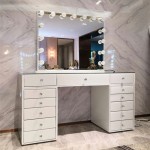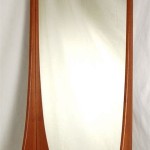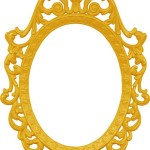Hanging a Mirror in Front of a Bathroom Window
Positioning a mirror in front of a bathroom window can create a striking design element, enhancing natural light and adding depth to the space. However, this placement requires careful consideration of practical factors such as moisture, sunlight exposure, and the mirror's backing. This article explores the benefits and challenges of this design choice and offers guidance on proper installation and maintenance.
One primary advantage of placing a mirror opposite a bathroom window is the amplification of natural light. The mirror reflects incoming sunlight, brightening the room and potentially reducing the need for artificial lighting during daylight hours. This can contribute to energy savings and create a more welcoming atmosphere.
Mirrors strategically placed in front of windows can also create an illusion of greater space. This is particularly beneficial in smaller bathrooms, where the reflection of the outdoor view can visually extend the room's boundaries. This effect is maximized when the mirror covers a significant portion of the wall.
Privacy concerns are a significant factor to consider. While daytime privacy might be maintained by the reflectivity of the mirror, nighttime privacy could be compromised. If the bathroom window is visible from outside at night, interior lights will reflect off the mirror, potentially revealing silhouettes or activities within. Appropriate window coverings, such as blinds or curtains, are crucial to mitigate this risk.
Direct sunlight exposure can impact the longevity of the mirror. Prolonged exposure to UV radiation can damage the mirror's backing, causing discoloration or deterioration. Choosing a mirror with a UV-resistant backing is crucial for this application. Additionally, the heat generated by direct sunlight can potentially warp or crack the mirror over time, particularly in climates with intense solar radiation.
Moisture is another critical consideration in bathroom environments. Bathrooms are inherently humid spaces, and placing a mirror directly opposite a window can expose it to condensation. While modern mirrors are often designed with moisture-resistant backing, prolonged exposure to damp conditions can still lead to damage. Adequate ventilation is essential to minimize moisture buildup and protect the mirror's integrity.
The type of mirror backing plays a significant role in its durability and suitability for placement in front of a window. Standard silvered backings are susceptible to moisture damage. Opting for a mirror with a moisture-resistant or sealed backing is highly recommended for bathroom applications, especially in front of windows. Some manufacturers offer mirrors with specialized coatings designed to withstand high humidity and prevent deterioration.
Proper installation is vital for securing the mirror and ensuring its longevity. The wall surface must be clean, dry, and structurally sound to support the mirror's weight. Using appropriate mounting hardware designed for bathroom environments is essential. Consider using adhesive specifically formulated for mirrors in addition to traditional mounting hardware for added security and stability, especially in humid conditions.
Regular cleaning and maintenance are necessary to preserve the mirror's appearance and functionality. Using a non-abrasive glass cleaner and a soft cloth is recommended to avoid scratching the reflective surface. Regularly inspecting the mirror's edges and backing for signs of damage or deterioration is crucial for early detection of potential issues. Addressing any signs of moisture damage promptly can prevent further deterioration and extend the mirror's lifespan.
The size and shape of the mirror should complement the overall bathroom design and the window's dimensions. A large mirror can maximize light reflection and create a dramatic visual effect, while a smaller, more decorative mirror can serve as a focal point without overwhelming the space. Consider the proportions of the room and the surrounding fixtures when selecting the mirror's dimensions.
The framing material of the mirror should be chosen with the bathroom environment in mind. Materials resistant to moisture and humidity, such as stainless steel, aluminum, or treated wood, are preferred. Avoid using materials prone to warping, rusting, or mildew growth, such as untreated wood or iron. The frame's style should harmonize with the overall bathroom aesthetic.
When considering the placement of the mirror in relation to the window, ensure that the reflection does not create excessive glare or direct intense sunlight onto sensitive surfaces. Positioning the mirror slightly off-center or using frosted glass can help diffuse the reflected light and prevent glare. Evaluate the angles of sunlight throughout the day to determine the optimal mirror placement.
Consulting a professional installer is recommended for larger or heavier mirrors, especially for complex installations or when working with unconventional wall surfaces. Professional installers have the expertise and tools to ensure secure and proper mounting, minimizing the risk of damage to the mirror or the wall.

Bathroom Mirror In Front Of Window Design Ideas

Placing Mirrors In Front Of Windows Mecc Interiors Inc

Vanity Mirror In Front Of Window Design Ideas

Bathroom Mirror In Front Of Window Design Ideas

Mirror Over A Window Designstiles Bathroom Interior Design Luxury

Master Bathroom Renovation With Sliding Mirror Over The Window Remodelaholic

Hanging A Sink Mirror In Front Of Window Young House Love

Bathroom Vanity In Front Of Window Contemporary Veranda Sleek Design Trendy

Bath Vanity Mirror In Front Of Windows Transitional Bathroom

Placing Mirrors In Front Of Windows Mecc Interiors Inc







